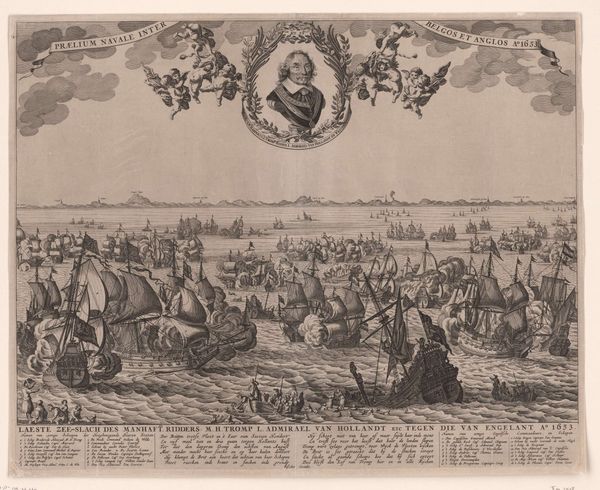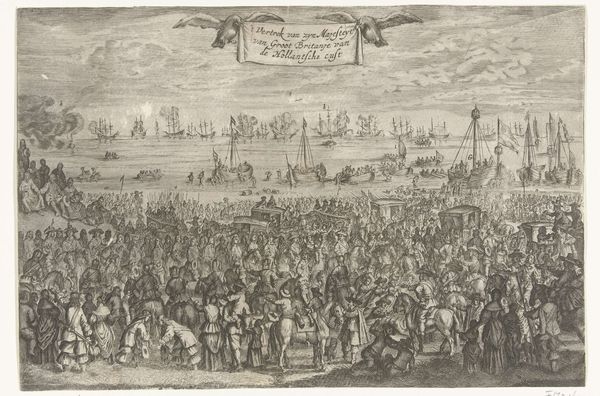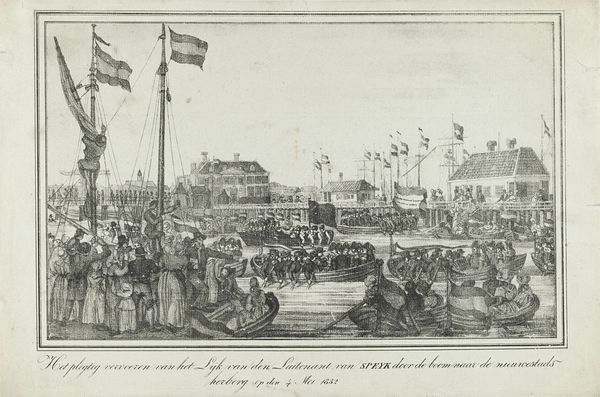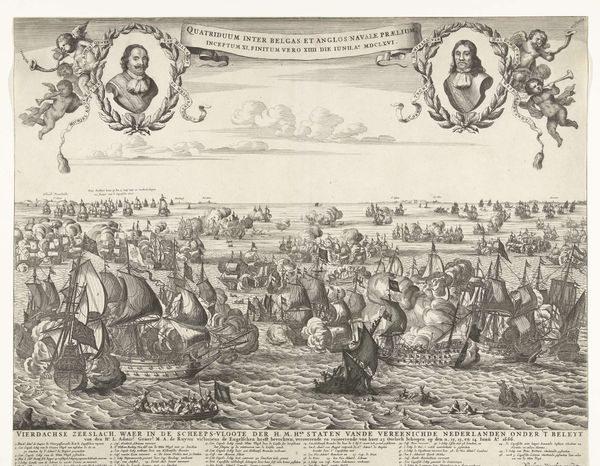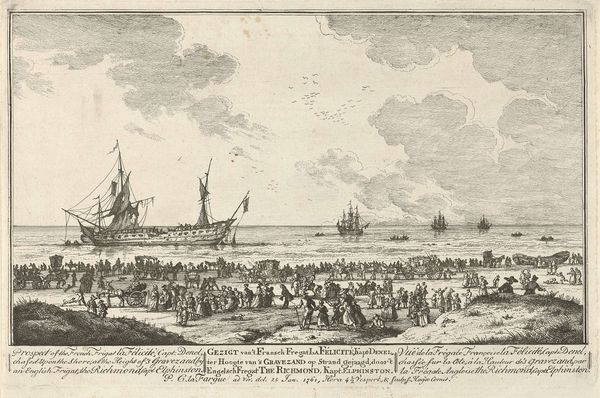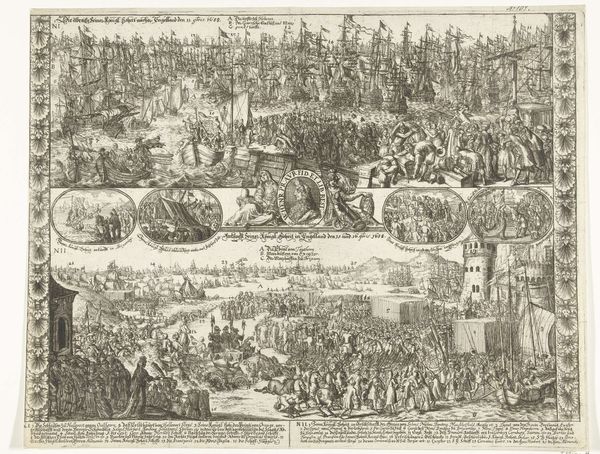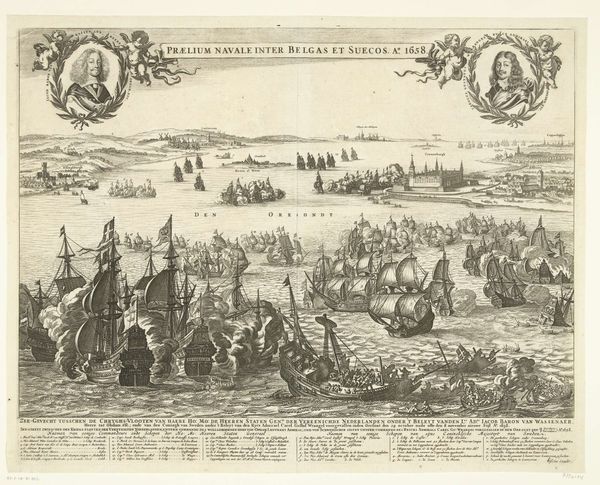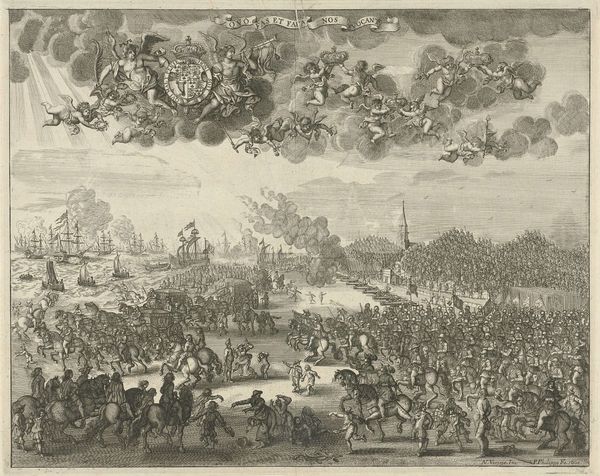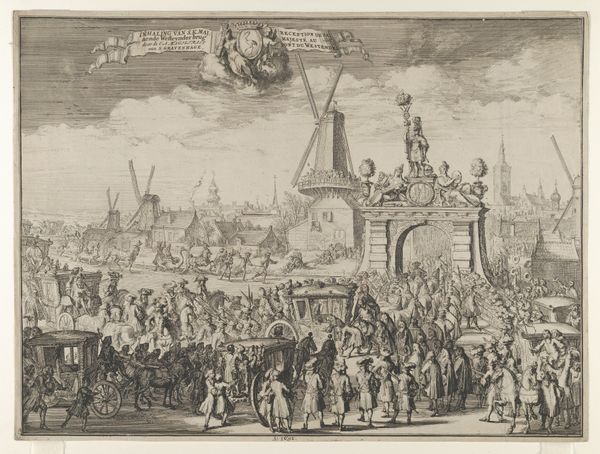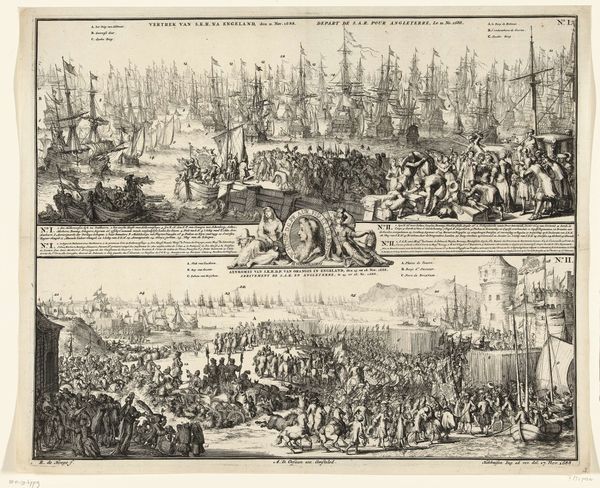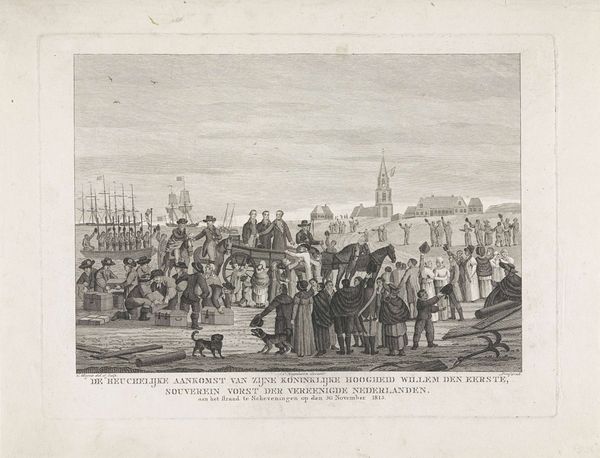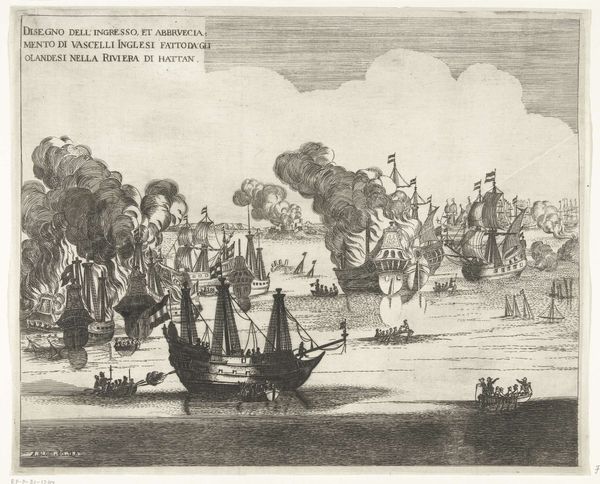
print, engraving
#
baroque
# print
#
landscape
#
cityscape
#
history-painting
#
engraving
Dimensions: height 376 mm, width 502 mm
Copyright: Rijks Museum: Open Domain
Curator: What strikes me immediately about this engraving is the incredible sense of depth – almost an atmospheric perspective – despite the monochrome. It feels busy but not chaotic. What are we looking at, exactly? Editor: We're viewing "The Departure of Charles II from Scheveningen to England, 1660." It commemorates a pivotal moment in British history: the restoration of the monarchy. You know, it’s funny to think of such a monumental event immortalized in what is essentially a print. A document as much as it is a piece of art, really. Curator: A print by an anonymous artist, held here in the Rijksmuseum. I am curious about this "monumental" thing; the artist captured not just a historical fact but maybe also something more profound. There's this real… longing emanating from the crowds on the shore. Editor: Definitely, that sense of expectation is palpable. Considering the social context – years of Cromwell's puritanical rule – the return of Charles II symbolized a return to tradition and celebration, what some would define as a new order. The carefully ordered composition mimics this return to hierarchy. The engraving's precision and detail really speak to that. Curator: It makes me ponder on history painting itself. Isn’t it about making myths as much as it is recording events? See how the ships are almost dreamlike there. That rendering of a key port makes you wonder if there's an underlying meaning, especially as he reclaims his crown! The fleet in the background… almost allegorical. Editor: You raise a crucial point about the interplay of myth and reality. The decision to depict it as a print – making it easily reproducible and widely accessible – tells us a lot. This image was crafted to cement the narrative of the restored monarchy in the popular consciousness. Curator: Indeed, there's power in numbers here. A way of legitimising through its proliferation, perhaps? Looking at this piece makes me feel deeply moved by both the history that played out, the event itself, but it’s still mostly about something felt; and, beyond its narrative function, something of ourselves looking for solace or continuity perhaps? Editor: Beautifully put. The print’s endurance underscores how art shapes collective memory. The engraver managed to portray not just the factual leaving but also captured this kind of "ghost in the machine"; the collective emotion surrounding such a significant turning point. A remarkable intersection of history and imagination!
Comments
No comments
Be the first to comment and join the conversation on the ultimate creative platform.
